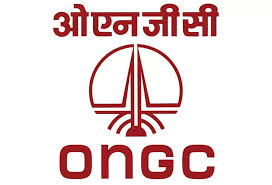Introduction: ONGC Plans Ethane Imports Amid Changing Qatar LNG Composition
In a significant shift in its energy strategy, Oil and Natural Gas Corporation (ONGC) plans to import ethane starting May 2028, compensating for the altered composition of liquefied natural gas (LNG) from Qatar. As per a recent tender floated by the state-owned energy giant, the move aims to ensure a stable feedstock supply for its petrochemical arm ONGC Petro additions Ltd (OPaL). This change comes after QatarEnergy’s revised LNG contract excludes key components like ethane and propane, which are crucial for petrochemical production.
also read this:-7 Ways Agentic AI Is Transforming Software Development and Tech Stacks – Bernstein Repor
Why ONGC is Importing Ethane
Shift in Qatar LNG Composition from 2028
India currently imports 7.5 million tonnes per annum (MTPA) of LNG from Qatar. Out of this, 5 MTPA is supplied on a firm basis, which traditionally contained methane, ethane, and propane. While methane is commonly used for electricity, fertilizers, cooking gas, and CNG, ethane and propane are vital feedstocks for producing LPG and petrochemicals.
However, the existing contract with QatarEnergy ends in 2028. Under the new agreement signed last year, Qatar will only supply lean LNG—gas that is stripped of ethane and propane, eliminating ONGC’s access to these valuable byproducts.
Dahej C2/C3 Plant Investment Impacted
ONGC has already invested ₹1,500 crore in setting up a C2/C3 extraction plant at Dahej in Gujarat, which was designed to extract ethane and propane from imported LNG. The extracted feedstock was supplied to OPaL, which runs a large-scale petrochemical complex using dual feed crackers. The shift to lean gas would render this investment underutilized unless alternative feedstock sources are arranged.
OPaL’s Feedstock Security Strategy
800,000 TPA Ethane Requirement from 2028
In response, ONGC now plans to import 800,000 tonnes per annum (TPA) of ethane, starting in mid-2028, to maintain uninterrupted operations at OPaL. The tender document highlights OPaL’s dual feed cracker setup, which can process a combination of naphtha, ethane (C2), propane (C3), and butane (C4).
OPaL is home to Southeast Asia’s largest standalone dual feed cracker, and ensuring ethane availability is critical for its optimal utilization and continued growth in India’s petrochemical sector.
Joint Venture Plan for Ethane Transport
To facilitate the import of ethane, ONGC is looking for joint venture partners to build Very Large Ethane Carriers (VLECs). These carriers will be crucial in transporting the ethane from global suppliers to Indian shores. The move signifies ONGC’s intention to build a robust ethane logistics ecosystem, ensuring long-term feedstock security and supporting domestic petrochemical capacity expansion.
Strategic Implications for India’s Petrochemical Industry
This strategic shift underlines ONGC’s commitment to self-sufficiency in petrochemical raw materials, even as global gas supply dynamics evolve. The change in LNG composition by QatarEnergy may trigger similar responses from other Indian petrochemical companies dependent on LNG derivatives.
By proactively setting up an ethane import infrastructure, ONGC is safeguarding not just OPaL’s future but also India’s ambitions to become a leading player in petrochemical manufacturing and exports.
Additionally, such large-scale ethane import projects could stimulate investments in port infrastructure, ethane storage terminals, and shipping partnerships, creating a ripple effect across allied sectors.
Conclusion: ONGC Eyes Long-Term Feedstock Stability
ONGC’s decision to import ethane from 2028 marks a crucial step in securing India’s petrochemical feedstock chain. With Qatar’s shift to lean LNG, ONGC is adapting by building a new ethane supply strategy, investing in transport infrastructure, and ensuring uninterrupted operations at OPaL. The move reflects ONGC’s proactive approach to evolving energy dynamics while reinforcing India’s industrial resilience and growth trajectory in the global petrochemical market.

FAQs
Q1: Why is ONGC importing ethane?
ONGC is importing ethane to replace the loss of ethane and propane in the revised LNG contract with QatarEnergy starting 2028.
Q2: What is lean LNG?
Lean LNG is liquefied natural gas that has been stripped of heavier hydrocarbons like ethane and propane, leaving mainly methane.
Q3: What is OPaL, and why does it need ethane?
ONGC Petro additions Ltd (OPaL) is ONGC’s petrochemical subsidiary. Its mega dual feed cracker plant uses ethane as a critical feedstock for manufacturing plastics and chemicals.
Q4: What are VLECs?
VLECs are Very Large Ethane Carriers, specialized ships designed to transport ethane in large volumes across long distances.
Q5: How much ethane will ONGC import annually?
ONGC plans to import 800,000 tonnes of ethane per annum starting from mid-2028.




